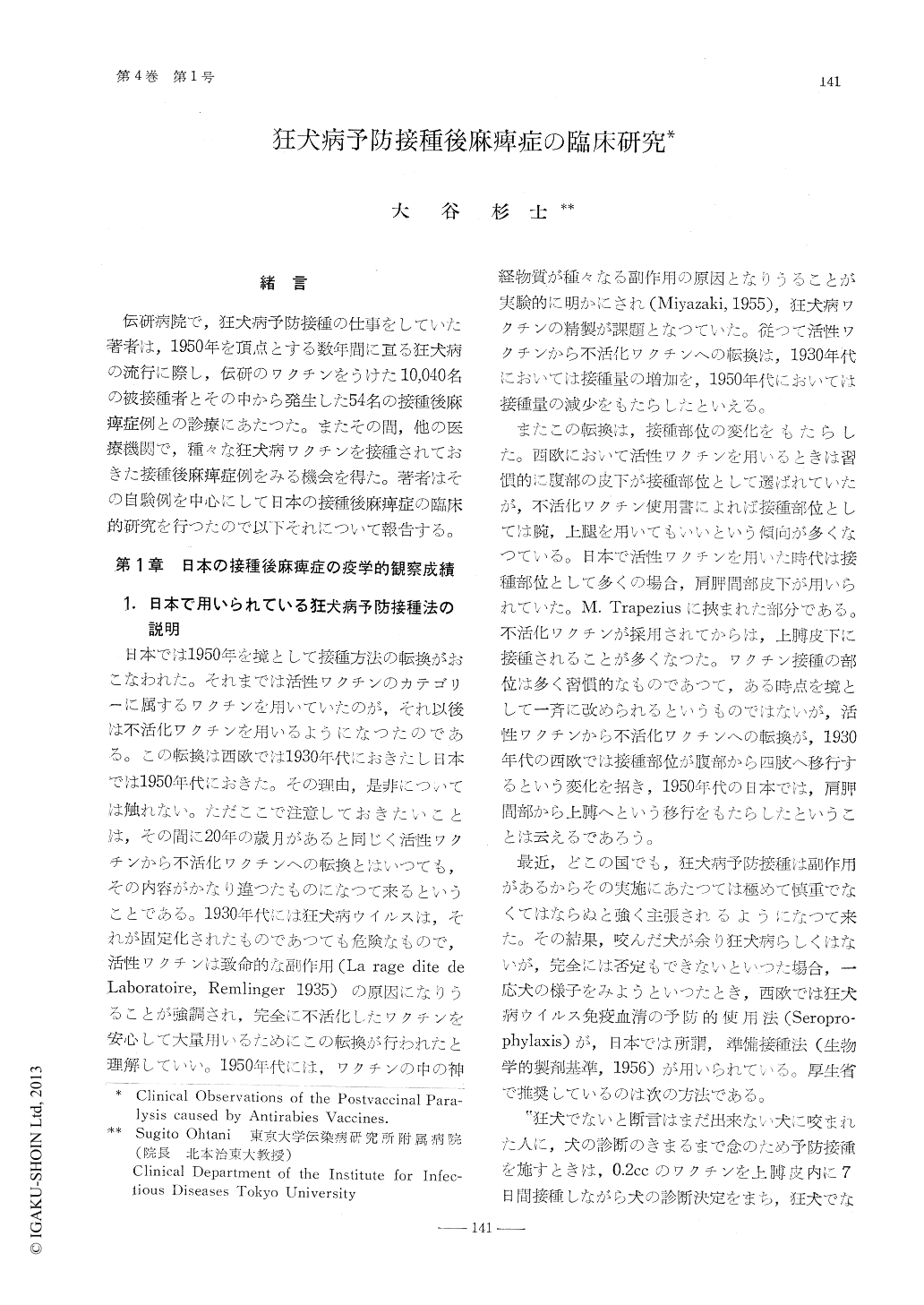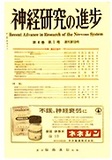Japanese
English
- 有料閲覧
- Abstract 文献概要
- 1ページ目 Look Inside
緒言
伝研病院で,狂犬病予防接種の仕事をしていた箸者は,1950年を頂点とする数年間に亘る狂犬病の流行に際し,伝研のワクチンをうけた10,040名の被接種者とその中から発生した54名の接種後麻痺症例との診療にあたつた。またその間,他の医療機関で,種々な狂犬病ワクチンを接種されておきた接種後麻痺症例をみる機会を得た。著者はその自験例を中心にして日本の接種後麻痺症の臨床的研究を行つたので以下それについて報告する。
Antirabies vaccines including live and inacti-vated vaccines were given on 14, 388 victimsduring the years of 1948~1957 at the Hospitalof Institute for Infectious Diseases in Tokyo. Clinical pictures of the postvaccinal neuropa-ralytic accidents were summerized and discussionon the differences between the early and delayedtypes.
The followings are the results of clinical ob-servations:
1) The clinical pictures of the postvaccinl pa-ralysis caused by live vaccines were consistedof two types of symptome complexes. One ofthem resembled to para-infectious encephalo-myelitis and the other to acute multiple sclerosis.The former has a short latent period and thelatter has a long one.
2) The clinical pictures of the postvaccinalparalysis caused by inactivated vaccines werealso consisted of these two types, but there wererarely found the cases of delayed type. Particu-larly, the cases caused by intradermal injectionsof inactivated vaccines are all acute encephalomy-elitis form.
3) The rate of incidence of postvaccinal paralysis was influenced by age of vaccinated persons,method and possibly volume of nervous tissuecontained in inoculum.
After precise analysis of the clinical pictures,the author cames to the speculation that the post-vaccinal paralysis, in other word, postvaccinalencephalomyelitis occurred on the vaccinatedcases, cannot be explained completely by a sin-gle factor.
This can be explained by the concept thatthese occurred two independent pathologic me-chanisms through the vaccination.

Copyright © 1959, Igaku-Shoin Ltd. All rights reserved.


